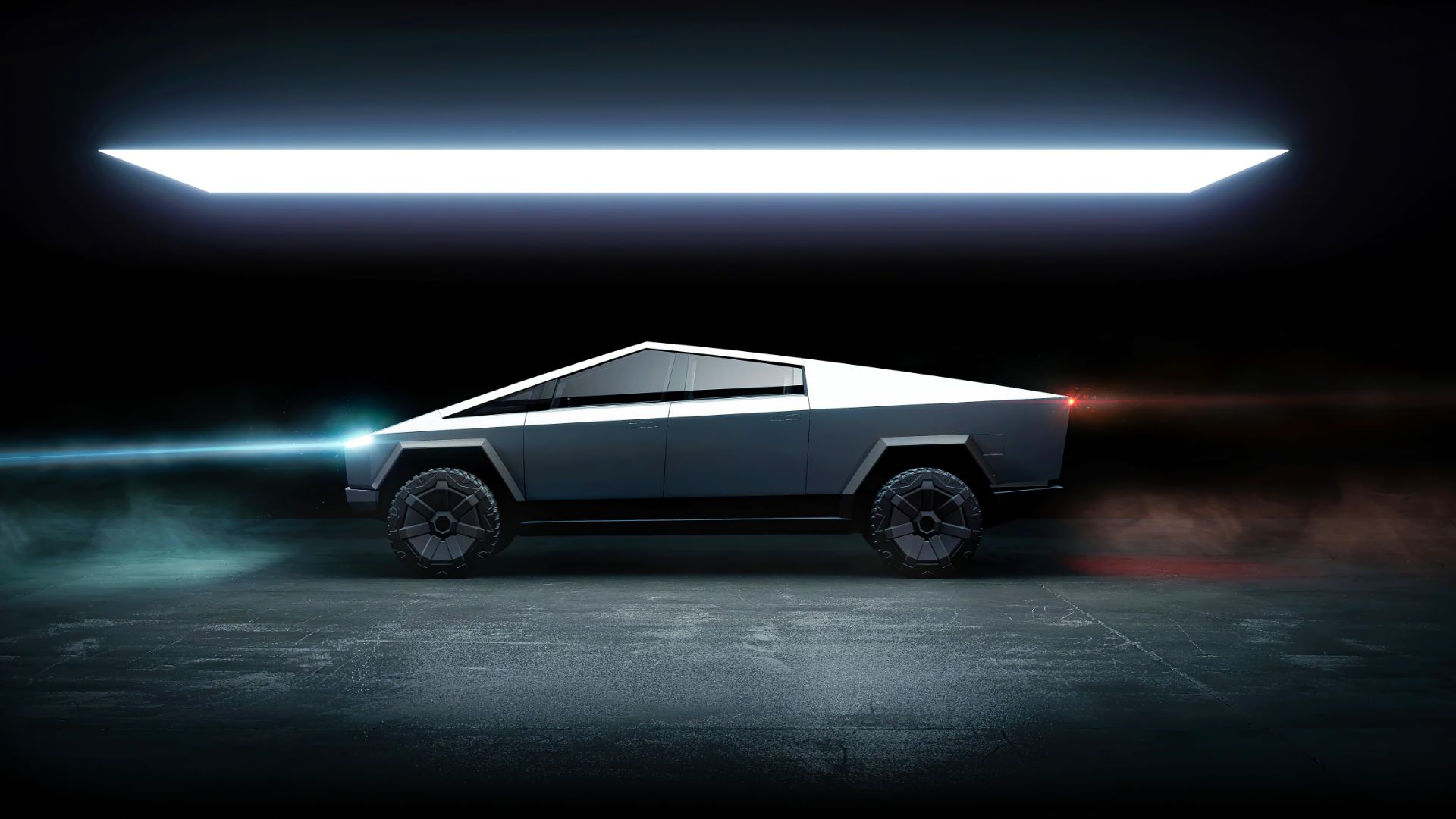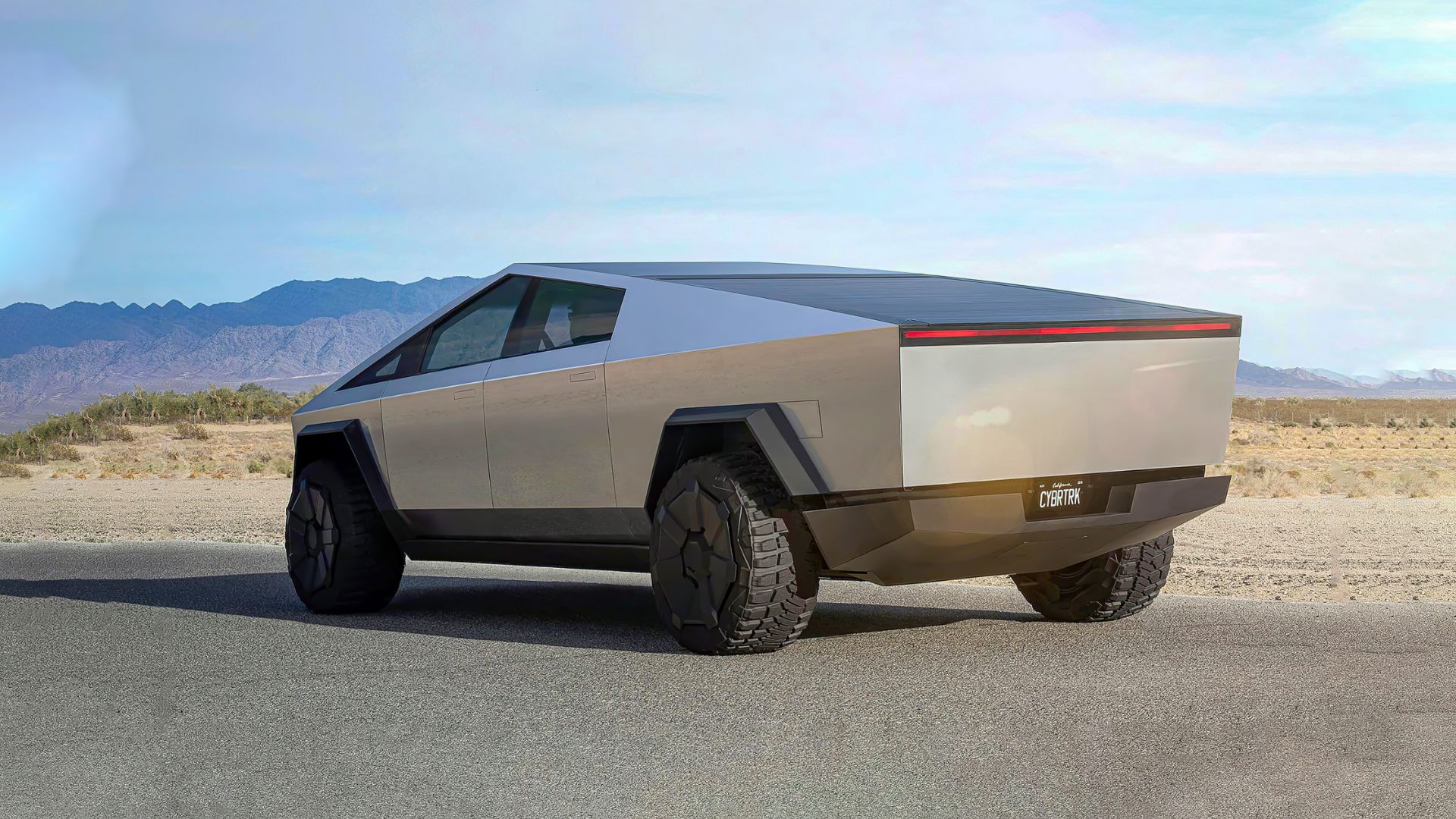
After two years of delays, Tesla has finally built its first Cybertruck – and is today (30 November) set to hold a high-profile delivery event for the first customers.
The first example of the radical electric pick-up was produced at the Gigafactory in Texas. Tesla CEO Elon Musk said his company plans to make about 250,000 Cybertrucks a year, depending on demand, with sales starting later in 2023.
Tesla Cybertruck vs the most powerful pickups and SUVs
However, there remains a large question mark over whether the Cybertruck will be sold in Europe. According to a German TUV safety certification expert, the vehicle will require “strong modifications to the basic structure” before it can be sold on this side of the Atlantic.
Because the Cybertruck is classed as a light duty truck in the USA, it gets exemptions from many safety regulations, including for pedestrian safety. That’s not the case in Europe, however.
The Cybertruck reportedly has up to 1.9 million pre-orders from prospective buyers around the world, but when exactly it will be sold outside America – if indeed it can be – remains unclear.
Innocent bystanders

Stefan Teller, automotive expert at SGS-TUV Saar GmbH, outlined his concerns about the Cybertruck. “The front of the vehicle must not be stiff,” he explained. “The bumper and bonnet must be able to absorb energy to protect pedestrians.”
This means the aforementioned “strong modifications to the basic structure,” would be necessary. Teller follows that, for type approval, the Cybertruck needs to comply with 50 to 60 different regulations.
Looking back at the reveal of the Cybertruck, much was made of how stiff and strong its rolled stainless steel structure and panels were. Great for resisting damage, perhaps, but less so for the occupants and unwitting pedestrians.
‘A big task for Mr Musk’

Regulations require that new cars deform in very specific ways, depending on the nature of an accident. For the occupants, the car’s structure needs to collapse in order to dissipate energy. For pedestrians, the vehicle must cushion the blow in the event of an impact.
With the Cybertruck, explained Stefan Teller, “nothing is deformed in the event of an impact. Instead, enormous forces act on the occupants. Airbags then no longer help.”
On this basis, “It will not be possible to sell it in this country [Germany] as a mass-production vehicle on the basis of type approval”. And with post-Brexit Britain falling into line with EU regulations, the same scenario seems likely here. “It is still a big task for Mr. Musk,” concludes Teller. Perhaps too big, we suspect.
ALSO READ:
Which suits you best, a plug-in hybrid or an electric car?
Regulations should adapt for AI cars, laws can’t block progress, that’s simply stupid. If, by the release date, the systems prove reliable and clever enough to prevent any such speculated crash, it’d be wise for EU to certify it as safe. If progress were slowed because the EU regulations are tailored for a world 30 years ago, the EU would very soon prove to the world that it’s actually not as progressive as it thinks of itself.
Thats no really the issue, the big issue is how many laws do you have to keep changing just to have one vehicle comply with current laws, I doubt governments around the world are going to make an effort to pass laws for every unique car, its a case if the car does not comply with current laws it will not be able to be allowed to be sold, Australia complies with European guidelines and this CT does not comply.
I wouldn’t trust an AI to prevent 100% of all accidents. While the number of accidents will almost undoubtedly decrease, they won’t go down to zero. In the event of one of those accidents, the car must still deform to protect pedestrians and occupants.
Exactly, look at the incidents already involving AutoPilot on his ‘normal’ EV’s (admittedly many/most involving stupid human error/mis-use), then scale that up to the carnage likely to be caused by one of these things going AWOL ……
So how do all those armored cars for vip:s pass inspection?
Well, armored cars are not entirely prohibited, you can get yourself a special permit that allows you to drive one. But it’s not easy to justify that you need one.
This is why i dont buy modern cars they collapse like soda cans. Ive been in accidents in my 79 cutlass and never got hurt, the car still ran with almost no damage while the newer car that hit me was totalled and the people driving it were complaining about the airbag hurting them. Some how the science on paper doesnt always play out in the real world, i guess thats why they call it theory.
In the accident you referred to, what probably happened is the poor other car absorbed most of the impact of the crash. Imagine if you hit another 79 cutlass, it would be like iron bars crashing into each other and the impact would have hit both cars’ passengers tremendously. Your car was spared at the expense of the other car. In case you don’t understand the physics, the reason why cars are designed to do this is so that the kinetic energy from the impact is used up folding/deforming the car, so less impact hits the passengers and the car is less likely to bounce/overturn/veer wildly.
Cities like Paris, Barcelona, Berlin, Oslo, Copenhagen, Amsterdam, Brussels, London will take action against using Stadtpanzer (big SUVs) within city limits in the coming 5-10 years. CT may not see the light of day altogether in the EU.
EU just does not want ppl to have bulletproof cars, lets face it
It’s more a question of ‘aren’t we lucky not to NEED them’, judging by the annual spate of school/college/mall/drive-by shootings in the States !
Realistically this is a highly impractical car that’s not really been built for any other reason than to show off in, I doubt very much it will ever be sold in the EU markets because A. There’s no market for it outside of a handful of rich folk and B. It’s huge and not adhering to any kind of safety regulations which regardless of opinion are important for the protection of pedestrian and road user
They aren’t “EU regulations” they are ECE regulations. ECE is a UN cooperation organisation for Europe and includes many more countries than the EU. Its regulations are also picked up by many countries beyond Europe. The US is an outlier in this, especially in the light truck market. These regulations are not secret or complicated. Anybody experienced in the industry would know about them. If Musk wants to sell CyberTruck in Europe, this should have been designed in from the beginning, or there need be to be a plan to build a different cyber truck for Europe.
Instantaneous acceleration, outrageous curb weight, no pedestrian crumple zones, and driven by Elon Musk fanboys.
European pedestrians should count themselves lucky.